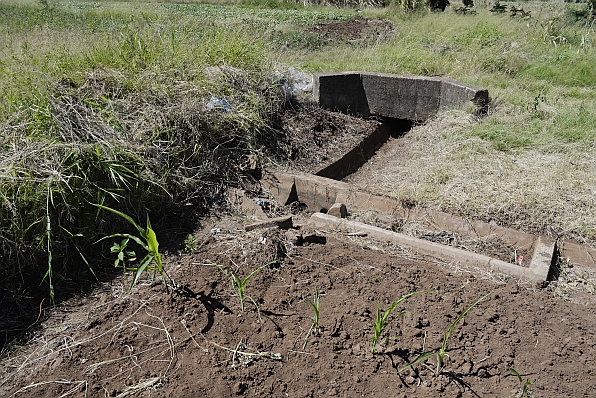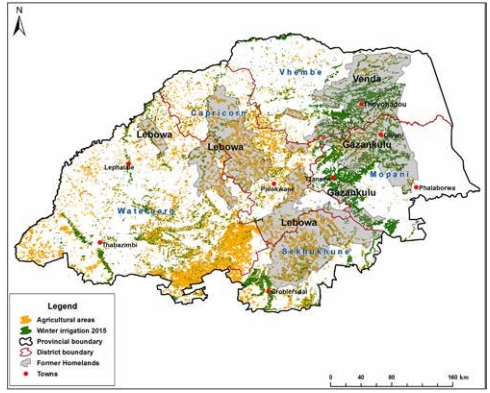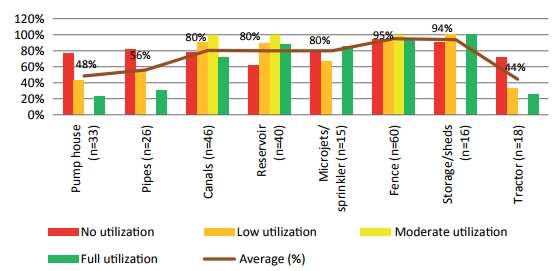A baseline for revitalization of smallholder schemes in South Africa
Ambitious efforts are underway in Africa to promote the spread of smallholder irrigation. This work is critical for achieving sustainable intensification of agriculture and for enhancing its resilience in the face of more frequent and severe droughts.

Photo: Graeme Williams / IWMI
As part of its concerted support for such efforts, the International Water Management Institute (IWMI) has published a new study – titled Smallholder irrigation schemes in the Limpopo Province, South Africa (Working Paper 174) – which sheds light on the underutilization of these schemes in former “homeland” areas of a key agricultural province. Working in collaboration with the Department of Agriculture, Forestry and Fisheries (DAFF) and the Limpopo Department of Agriculture and Rural Development (LDARD), a team of researchers lead by IWMI principal researcher Barbara van Koppen conducted a survey of 76 public smallholder irrigation schemes. Their purpose was to establish a baseline understanding of key features of these schemes, including smallholders’ perceptions about their limitations.
Study results show that, in the dry winter season of 2015, only 28 schemes were being fully utilized. Another 28 were not being used at all, while the rest (22) were only partially in use. Though not surprising (since underutilization of large irrigation schemes is also widespread), these findings do provide cause for concern, suggesting significant untapped potential.

To identify the main reasons for underutilization, researchers considered farm size, age and gender of registered member, market orientation, and other characteristics of the schemes. Contrary to common views in South Africa’s policy discourse, the results showed no link between utilization of the schemes and their overall size or the numbers and plot sizes of member farmers. The study debunked other widely held notions as well. One is the perception that irrigated crop production is largely for subsistence, when in fact it has a strong commercial orientation. Another is that high proportions of women smallholders limit utilization of these schemes. Across all schemes, 46 percent of registered members, on average, were women, and the proportion actually farming the land was even higher.
The one overarching limitation of these schemes turned out be the poor condition of irrigation and related infrastructure, which in half the schemes was compounded by unrepaired flood damage. Reflecting a “build-neglect-rebuild syndrome,” the findings underline the need for improved institutional support, aimed at fostering more participatory approaches to plan such schemes and choose appropriate technology. Stronger links with markets could also go a long way toward increasing the use of smallholder irrigation schemes.

Forming part of IWMI’s contribution to the CGIAR Research Program on Water, Land and Ecosystems (WLE), which the Institute leads with support from the CGIAR Fund, the new study complements other recent research that used remote sensing to fill major gaps in our knowledge about the actual extent of smallholder irrigation. Findings from that research were recently published in IWMI Working Paper 172, Mapping Irrigated Areas in the Limpopo Province, South Africa.
One of the findings is that the area under informal irrigation is three to four times larger than that of public schemes. Comparative analysis of the two approaches is needed to generate new insights that further inform government organizations about the effectiveness of different measures for revitalizing smallholder irrigation.

